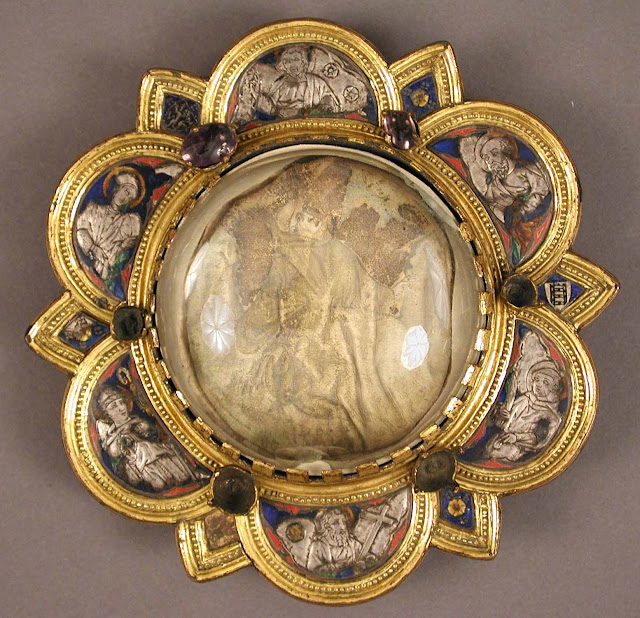Morse with Saint Francis Receiving the Stigmata 14th century
This morse, used to fasten a priest's robe at the neck, combines the arts of the goldsmith and the illuminator. Under the rock crystal is an image of Saint Francis, painted on parchment. According to several sources, Saint Francis received the marks of Jesus' wounds from his Crucifixion as he knelt in prayer.
Morses were provided with hook and eye, and were often richly ornamented with embroidery or precious stones. As early as the eleventh century such metal clasps are found represented in miniatures and mentioned in inventories. These clasps, however, gradually lost their practical use and became were ornaments, which were sometimes sewn firmly to the flaps that served to fasten the cope, sometimes only attached to the flaps by hooks, so that, after the vestment had been worn, the clasps could be removed and cared for separately.
This latter was especially the case when, as frequently happened at least in the later Middle Ages, the clasp was very heavy or very valuable. Many churches had a large number of such morses. They were generally made of silver covered with gold, and were ornamented with pearls, precious stones, enamel, figures of saints, ornamental work in flowers and vines and similar designs. Such clasps were frequently the finest products of the goldsmith's art; they were generally round, and there is abundant proof of the desire for costly clasps collected by the old inventories, and by the numerous medieval morses preserved in churches and museums.
Made in Siena, Italy. Gilded copper, translucent enamel, silver, parchment, glass gems.
Repository: The Metropolitan Museum of Art
This image is a public domain image, which means either that copyright has expired in the image or the copyright holder has waived their copyright. Franciscan Gallery charges for the access to high resolution copy of the image. Manually restoration was necessary in order to improve quality, without covering the original image.









Comments
Post a Comment